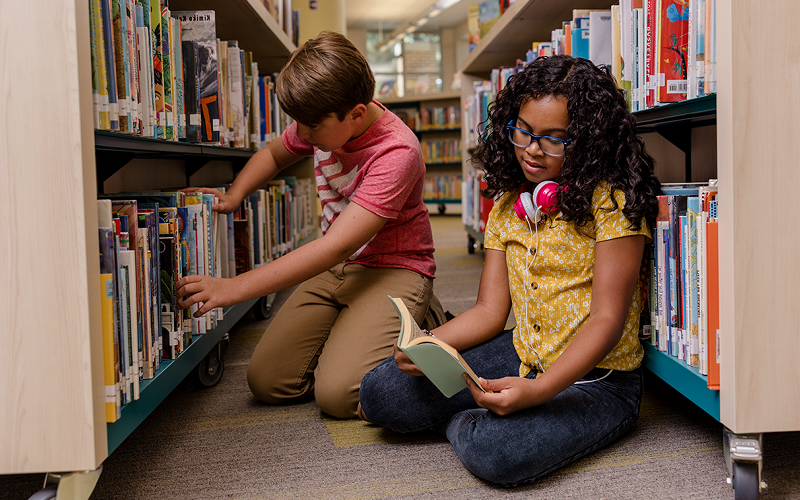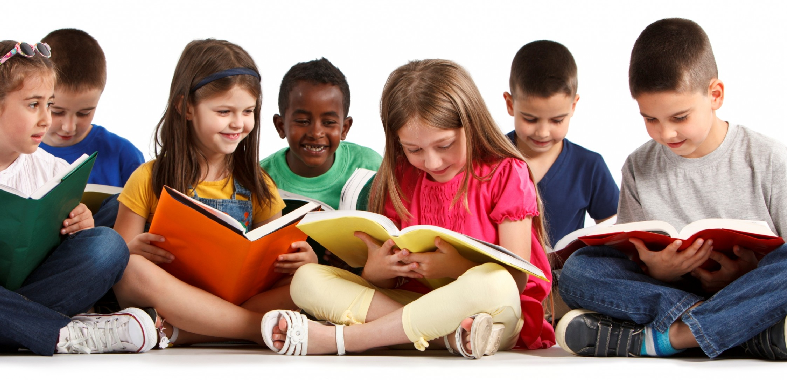
In a world brimming with a kaleidoscope of cultures, languages, and traditions, literature stands as a powerful medium that not only reflects but also celebrates this immense diversity. Here we look into the rich tapestry of stories, voices, and perspectives that literature offers, highlighting its role in promoting understanding, empathy, and appreciation for cultures different from our own. Through the pages of both classic and contemporary works, we journey across time and geography, encountering the varied narratives that shape our world. From the poignant poems of distant lands to the vibrant prose depicting the complexities of modern societies, literature is a mirror reflecting the multifaceted nature of human experience.
Contents
- Historical Perspective of Cultural Diversity in Literature
- Exploring Different Literature Genres and Cultural Stories
- Contemporary Authors and Their Contributions to Cultural Diversity
- The Role of Translation in Promoting Cultural Diversity
- Literature as a Tool for Cultural Education and Sensitivity
- Challenges and Criticisms in Representing Cultural Diversity
- References
Historical Perspective of Cultural Diversity in Literature
The journey of cultural diversity in literature is as old as the written word itself. To understand the present landscape of culturally diverse literature, it’s crucial to trace its evolution through history.
Early Literature and Cultural Representation
In the earliest days, literature was often a reflection of the dominant cultures and ideologies of the time. Ancient epics like Homer’s “Odyssey” or the Indian “Mahabharata” were among the first to introduce readers to the customs, beliefs, and values of their respective cultures. These works provided a window into the lives and traditions of ancient civilizations, albeit often from a singular cultural perspective.
Evolution of Diverse Voices in Literary History
As time progressed, the Renaissance and Enlightenment periods witnessed a gradual expansion in the scope of literature. The emergence of travelogues and exploration narratives brought tales of distant lands and cultures to the European readership. However, it wasn’t until the 19th and 20th centuries that a significant shift occurred.
The abolition of slavery, the civil rights movement, and the decolonization period globally contributed to the rise of diverse voices in literature. Authors like James Baldwin, Chinua Achebe, and Gabriel García Márquez brought fresh perspectives and narratives, highlighting the experiences and stories of people from previously underrepresented cultures.
Impact of Globalization on Literature
The advent of globalization in the late 20th and early 21st centuries further accelerated the diversification of literary voices. The digital age, increased travel, and cross-cultural exchanges have led to a more interconnected world. This connectivity has allowed for a greater dissemination of diverse literary works, breaking down geographical and cultural barriers. Literature today not only tells stories from around the globe but also often transcends its cultural origins, resonating with universal themes of human experience, irrespective of the reader’s background [1].
Exploring Different Literature Genres and Cultural Stories
The landscape of literature is as diverse as the cultures it represents, spanning various genres, each offering unique insights into different cultural experiences.
Fiction: Windows into Varied Cultural Realities
Fiction serves as a powerful vehicle for cultural expression, allowing readers to immerse themselves in the lives, struggles, and joys of people from different backgrounds. Novels, short stories, and plays have opened up worlds where readers can experience the rich tapestry of human life across cultures.
For instance, the magical realism of Latin American authors like Isabel Allende or the intricate narratives of Nigerian writer Chimamanda Ngozi Adichie provide deep insights into their respective cultures. Fiction, in its myriad forms, offers a unique space where cultural norms, traditions, and histories are woven into compelling narratives, creating empathy and understanding among readers worldwide.
Poetry: Expressing Cultural Identity and Heritage
Poetry, with its rhythmic and often symbolic language, has long been a medium for expressing cultural identity and heritage. Poets like Rumi, Maya Angelou, and Pablo Neruda have used this art form to convey the nuances of their cultures, touching on themes of love, loss, struggle, and celebration. Through poetry, readers are invited to experience the emotional and spiritual depths of different cultures, often finding common ground in shared human emotions and experiences.
Non-Fiction: Understanding Cultural Histories and Experiences
Non-fiction literature, encompassing biographies, essays, and historical accounts, offers a factual, detailed look at different cultural backgrounds. This genre provides a platform for voices that might otherwise be unheard, giving insight into real-life experiences and historical contexts [2].
Works like “I Know Why the Caged Bird Sings” by Maya Angelou or “The Wretched of the Earth” by Frantz Fanon provide powerful, real-world perspectives on the experiences of cultural and racial minorities. Through non-fiction, readers gain a deeper understanding of the complexities and intricacies of different cultural experiences, enhancing their knowledge and empathy towards others.

Contemporary Authors and Their Contributions to Cultural Diversity
In recent years, contemporary authors from diverse backgrounds have significantly enriched the literary world with their unique voices and perspectives.
Profiles of Contemporary Diverse Authors
Today’s literary scene boasts an array of authors who bring a variety of cultural experiences to their writing. Figures like Chimamanda Ngozi Adichie, whose works explore the complexities of life in Nigeria and the diaspora, and Khaled Hosseini, known for his poignant narratives set in Afghanistan, have garnered international acclaim. These authors, among others, offer readers a glimpse into their cultures, histories, and personal experiences, enriching the global literary tapestry with their stories.
Analysis of Significant Works That Highlight Cultural Diversity
The works of contemporary diverse authors are not just stories; they are windows into worlds that many readers might never otherwise encounter. Novels like “Americanah” by Adichie and “The Kite Runner” by Hosseini have not only entertained but also educated readers, highlighting issues of identity, migration, and cultural conflict. These books, and others like them, play a crucial role in fostering a deeper understanding and appreciation of cultural diversity, challenging stereotypes and promoting empathy.
Influence of These Authors on Modern Literature
The influence of contemporary diverse authors extends beyond their specific cultural contexts. They have played a pivotal role in shaping modern literature, broadening the scope of narratives and themes considered within the literary canon. Their contributions have encouraged a more inclusive approach to literature, inspiring a new generation of writers from various backgrounds to tell their stories. The impact of these authors is evident in the growing diversity of characters, settings, and narratives in mainstream literature, reflecting a more global and interconnected world [3].
The Role of Translation in Promoting Cultural Diversity
Translation plays a pivotal role in the global literary landscape, serving as a bridge that connects diverse cultures through literature.
Overcoming Language Barriers in Literature
Language is often a significant barrier that prevents readers from accessing literature from other cultures. Translation breaks down these barriers, allowing stories, ideas, and perspectives from one language to reach readers in another. It enables the sharing of literary works across linguistic boundaries, thus enriching the global literary scene.
For instance, the translation of Haruki Murakami’s works has introduced readers worldwide to contemporary Japanese culture, while Gabriel García Márquez’s “One Hundred Years of Solitude” has become a global phenomenon thanks to its translations.
Celebrated Translated Works and Their Cultural Impact
Translated literature has often had a profound impact on readers and societies beyond its original language. Works like “The Alchemist” by Paulo Coelho, originally written in Portuguese, or “Crime and Punishment” by Fyodor Dostoevsky, originally in Russian, have become global literary sensations. These translations have not only entertained readers but have also promoted cross-cultural understanding and appreciation by presenting diverse worldviews and life experiences.
The Process and Importance of Accurate Cultural Translation
Accurate translation is crucial in preserving the essence of the original work, including its cultural nuances and context. Translators often face the challenge of conveying the author’s intent, style, and cultural references in a way that is faithful to the original yet relatable to the target audience.
The skill and sensitivity of translators in handling cultural nuances play a significant role in the success and impact of translated literature. This process underscores the importance of cultural knowledge and sensitivity in translation, ensuring that the essence of the original work is effectively communicated to a new audience [4].
Through the art of translation, literature transcends geographical and linguistic boundaries, fostering a global dialogue that celebrates cultural diversity. It is through this exchange that literature continues to be a powerful tool in promoting understanding and empathy among diverse cultures.

Literature as a Tool for Cultural Education and Sensitivity
Literature has long been recognized as a vital tool in fostering cultural education and sensitivity. By immersing readers in diverse experiences and perspectives, literature can broaden understanding and promote empathy towards various cultures.
Literature in Educational Settings
In educational settings, literature serves as a gateway to diverse cultures, introducing students to worlds beyond their immediate experiences. Incorporating culturally diverse texts in school curricula exposes young minds to different lifestyles, beliefs, and traditions. This exposure is crucial in shaping a more inclusive and empathetic worldview among students.
Literature classes that include works from different cultures, such as African, Asian, Middle Eastern, or Indigenous literature, provide a broader understanding of the global society in which we live. It encourages critical thinking and discussions about cultural differences and similarities, thus nurturing a generation that values diversity.
Fostering Empathy and Understanding Through Reading
Reading literature from diverse cultures allows individuals to ‘walk in the shoes’ of others, fostering a deeper level of empathy and understanding. Stories, whether fictional or real, enable readers to connect with characters from different backgrounds, encouraging them to understand and feel for those who live different lives.
For instance, reading about the experiences of immigrants in a novel can provide insight into the challenges they face, fostering a more empathetic and informed viewpoint. This process of emotional and intellectual engagement through reading is a powerful tool in building bridges across cultural divides [5].
Case Studies: Successful Integration of Diverse Literature in Education
Several case studies highlight the successful integration of diverse literature in educational settings. Schools and universities that have actively included a wider range of cultural texts report increased cultural awareness and sensitivity among students.
These institutions often see a positive impact on the overall school environment, with students being more open-minded and respectful towards different cultures. Additionally, educators who use literature to discuss complex cultural issues find that students are more engaged and better able to grasp the nuances of cultural diversity.
Challenges and Criticisms in Representing Cultural Diversity
While literature plays a crucial role in promoting cultural diversity, it is not without its challenges and criticisms.
Stereotyping and Misrepresentation in Literature
One significant challenge in representing cultural diversity is the risk of stereotyping and misrepresentation. Authors writing about cultures outside their own experience may inadvertently rely on stereotypes or provide an inaccurate portrayal of those cultures.
This can perpetuate misconceptions and biases, contributing to a skewed understanding of the culture in question. For instance, portraying a culture solely through the lens of poverty or conflict can lead to a one-dimensional, oversimplified view of that culture. It’s crucial for writers to conduct thorough research and engage with members of the cultures they are writing about to ensure a more accurate and respectful representation.
The Debate Over Cultural Appropriation vs. Appreciation in Writing
The line between cultural appropriation and cultural appreciation in literature is often a subject of debate. Cultural appropriation occurs when writers from a dominant culture use elements from a culture to which they do not belong, often in a disrespectful or superficial way.
This can lead to a lack of authenticity in the representation and can be seen as exploitative. Cultural appreciation, on the other hand, involves a respectful and accurate depiction of another culture, often with the intention of highlighting its beauty and complexity. Authors must navigate this delicate balance, ensuring they are representing cultures in a way that is respectful and informed.
Addressing and Overcoming These Challenges
To overcome these challenges, authors, publishers, and readers alike must be proactive. For authors, this means engaging in extensive research, seeking feedback from members of the cultures they are writing about, and being open to criticism. Publishers can play a role by promoting diverse voices and ensuring that a range of cultural perspectives is represented in their publications.
Readers also have a responsibility to seek out and support authentic and diverse narratives, and to engage in discussions about the representation of cultures in literature. By working together, the literary community can strive towards more accurate and respectful representation of cultural diversity.
Addressing these challenges is not just about avoiding missteps; it’s about enriching the literary world with a tapestry of stories that accurately and respectfully reflect the diversity of human experience. It’s through this effort that literature can continue to be a powerful tool in promoting understanding and appreciation of cultural diversity.
References
[1] Multicultural Literature: Reflecting Diversity in Literature for Youth
[2] Culturally Diverse Literature
[3] The importance of multicultural literature
[4] A Guide to Selecting Multicultural Literature
[5] Learning About Cultural Diversity through Literature

